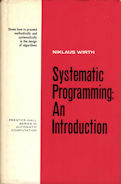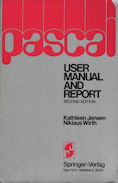Algorithms + Data Structures = Programs presents
a very systematic and scientific approach to the fundamental techniques
associated with data composition and program development.
The basic principles covered here are applicable to many scientific and engineering endeavors.
Contents include chapters devoted to fundamental data structures,
internal and external sorting, recursive algorithms, dynamic data structures
(recursive data types, pointers, list structures, tree structures, optimal search trees,
multiway trees, and key transformations),
and language structures and compiling (language definition and analysis, syntax graphs, parser and translator construction).
Among the Features
• Covers important basic techniques of program and data structuring
and demonstrates their suitability to a wide variety of practical applications.
• Develops programs in step-wise fashion, and expresses them
in a well-structured, detailed, and unambiguous presentation.
• Stresses the importance of performance analysis and demonstrates how
algorithm selection and refinement are used most effectively in program design.
• Presents illustrative programs that were run and thoroughly tested before their inclusion here.
• Practically oriented, employs the minimum required mathematical formalism.



